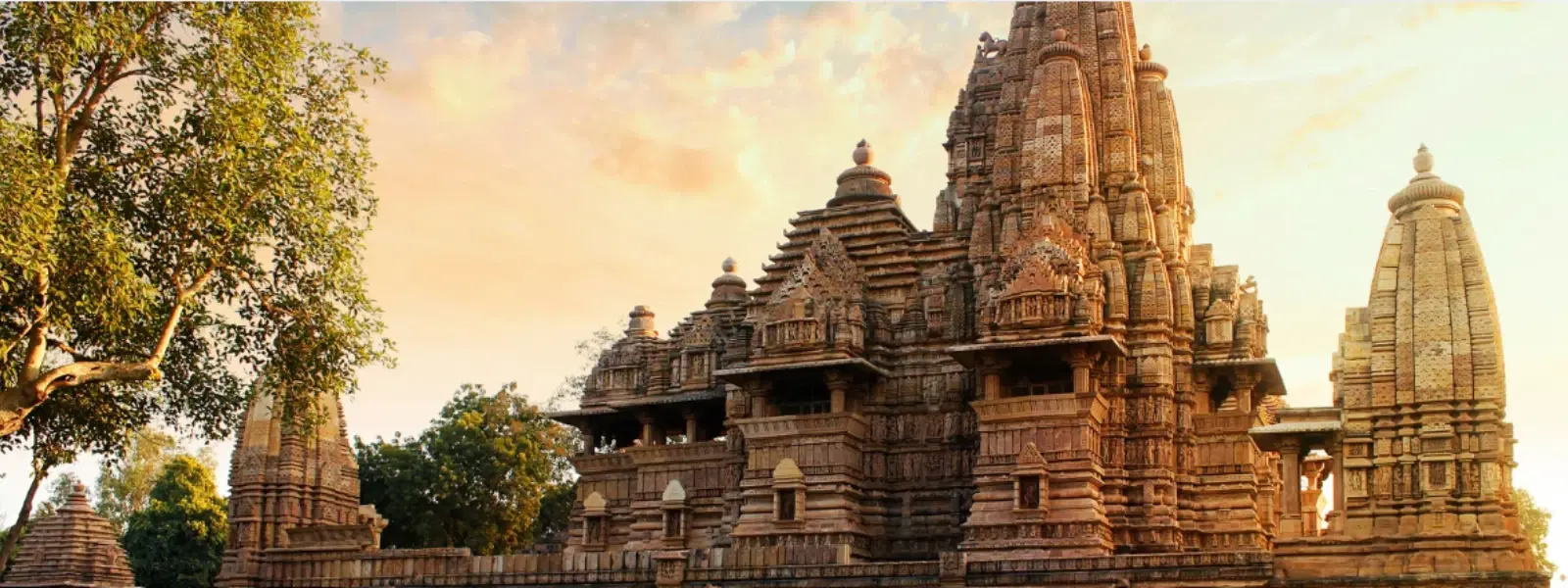
Hotels
•04 min read

The Lingaraj Temple in Bhubaneswar is not just an ancient structure; it is a living masterpiece that resonates with centuries of history and spiritual devotion. Overflowing with grandeur and intricate details, this temple is celebrated as a pinnacle of ancient Indian architecture. This blog serves as a comprehensive FAQ guide unveiling the architectural marvels of the Lingaraj Temple, exploring its historical roots, carvings, sculptures, and the distinctive Kalinga architectural style that sets it apart.
Constructed initially during the reign of the Somavamsi dynasty and later completed under the auspices of the Ganga dynasty, the Lingaraj Temple stands as one of Bhubaneswar’s oldest and most revered religious sites. This timeline is etched in stone, with each phase of construction marking important historical transitions. As you explore its architectural details, you witness a blend of eras, a testament to ancient craftsmanship and enduring faith.
Dedicated to both Lord Shiva and Vishnu in the form of Harihara, the temple holds deep significance in Hindu traditions. Beyond its religious allure, it is intimately connected to the Ekamra Kshetra region, a nexus of spiritual life in Odisha. The Lingaraj Temple's statues and reliefs not only narrate mythological tales but also serve as a reminder of the profound cultural and artistic heritage that continues to influence Odisha’s spiritual landscape.
The temple is a prime example of the Kalinga architectural style, characterized by its unique Deula structure, which includes the Vimana (sanctum tower), Jagamohana (assembly hall), and Natamandira (dance hall). These elements combine to create an imposing framework crowned by a towering spire adorned with intricate carvings that depict stories, rituals, and divine symbols. Such well-orchestrated artistry not only highlights the temple's beauty but also reflects a deep understanding of religious symbolism and architectural precision.
Local sandstone and laterite form the body of this revered structure. The choice of these materials is a nod to the region’s natural resources and the artisans' mastery in stone craftsmanship. Every chiseled detail—from delicate floral patterns to robust mythological figures—demonstrates a high level of precision and creativity. These carvings are more than decorative; they embody the artistic and cultural sensibilities of ancient Odisha, making the temple a timeless piece of art.

Walking through the corridors of Lingaraj Temple, one is greeted by a mesmerizing array of carvings that bring mythological stories to life. Deities, celestial beings, and epic scenes from revered Hindu texts are rendered with astonishing care and detail. The sculptural work stands as an enduring legacy to the skills of ancient artisans who captured the essence of divine narratives and human emotion in stone.
The sculptures are laden with symbolic nuances that extend beyond their aesthetic appeal. Each carving conveys religious motifs and cultural philosophies that reflect the spiritual beliefs of the era. By examining the symbolism behind these artworks, one gains deeper insights into the ritualistic practices and societal values that shaped ancient temple architecture in Odisha.
When compared with other ancient temples such as Mukteswar and Rajarani, the Lingaraj Temple stands out with its majestic spire and intricate detailing. While each temple has its unique style and historical context, Lingaraj’s structural elements, refined stone work, and harmonious proportions mark it as a superior example of Hindu temple architecture in Bhubaneswar.
The architectural style of the Lingaraj Temple has served as an inspiration for subsequent temple designs across Odisha. Its pioneering use of the Kalinga style and innovative stone craftsmanship set a benchmark that later architects aspired to mirror. This enduring influence is evident in the architectural vocabulary of many temples across the region, further underlining its cultural and historical importance.
Did you know? The intricate carvings and sculptures of Lingaraj Temple are considered some of the finest examples of stone craftsmanship in Odisha, showcasing unparalleled artistry and devotion.
The temple is a vibrant epicenter of activity during major festivals such as Shivaratri and Rath Yatra. Devotees and visitors alike find a serene yet spirited ambiance as rituals and celebrations honor the divine. It is a pilgrimage site that offers both a spiritual refuge and an opportunity to witness cultural festivities steeped in tradition.

Recognizing its immense historical value, various initiatives have been undertaken to preserve the Lingaraj Temple’s architectural heritage. Efforts include regular maintenance, restoration projects, and documentation by cultural preservation bodies to ensure that this marvel continues to inspire future generations. Its preservation is a testament to the resilience of ancient craftsmanship and the collective commitment of local communities.
The Lingaraj Temple features the Kalinga architectural style with a Deula structure, intricate carvings, a towering spire, and the use of sandstone and laterite materials.
The temple follows the Kalinga style, including a Vimana (sanctum tower), Jagamohana (assembly hall), and Natamandira (dance hall), representing Odisha’s traditional temple design.
Bhubaneswar is celebrated for its Kalinga architecture, known for vertical spires, elaborate carvings, and symbolic sculptures as seen in temples like Lingaraj, Mukteswar, and Rajarani.
It was initiated by the Somavamsi dynasty and completed under the Ganga dynasty, reflecting a rich blend of architectural styles and cultural influences.
The temple is a major religious site dedicated to Lord Shiva and Vishnu, serving as a spiritual hub and symbol of Odisha’s rich cultural heritage.
The Lingaraj Temple stands as a remarkable testament to the architectural brilliance and cultural richness of ancient Odisha. Its intricate carvings and sculptures, steep historical significance, and profound religious importance invite visitors to immerse themselves in a bygone era of artistry and devotion. Exploring this architectural jewel offers not only a glimpse into traditional stone craftsmanship in Odisha but also a deeper understanding of the cultural heritage that continues to influence temple design in the region.